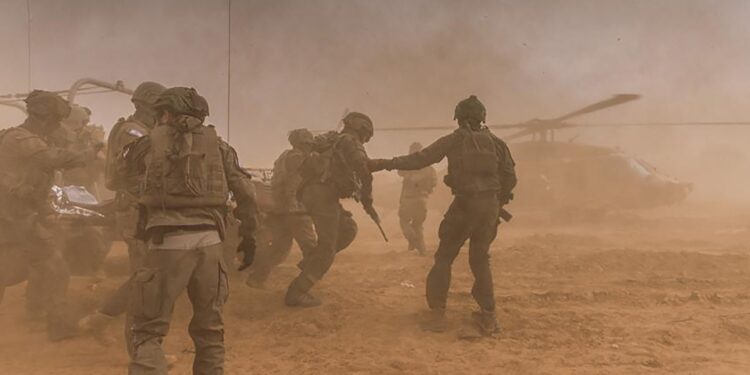The New York Times said that Israel’s failure to achieve its main goals, more than 100 days after the invasion of Gaza, raises growing frustration among its military leaders and leads some of them to believe that the recovery of detainees in the Strip is possible only through diplomatic, not military, means.
The newspaper published a lengthy report that included a summary of secret plans for military operations and testimonies from Israeli military commanders and political officials about the course of the war.
The New York Times indicated that in light of the limited progress made by Israel with regard to dismantling the structure of the Hamas movement in Gaza, doubts are growing among the senior military leadership about the possibility of achieving the two main goals of the war, which are eliminating Hamas and recovering more than 100 prisoners who are still being held in Gaza. It is believed that the movement is holding the majority of them.
The newspaper explained that the Israeli army imposed its control in Gaza on a smaller portion than it had envisioned in its battle plans since the beginning of the war.
She said that Israeli plans included controlling the cities of Gaza, Khan Yunis, and Rafah by late December, which was not achieved.
She added that the pace of progress of the military campaign, which was slower than expected, led a number of Israeli military leaders to express their frustration with the political leadership’s strategy regarding Gaza, and this also led them to believe that the recovery of the remaining detainees in the Strip would only be possible through diplomacy rather than military means.
The American newspaper quoted Israeli military leaders as saying that recovering prisoners and destroying the Hamas movement have now become incompatible goals.
It also reported statements made on Thursday by Israeli War Council member Gadi Eisenkot, in which he acknowledged that the goals of the war had not been achieved, and that it was not possible to recover detainees through military means.
She pointed out that Israeli military leaders believed before the war that the network of tunnels built by Hamas extended only 100 miles (160 kilometers), but they now estimate that it may extend to a distance of 450 miles (725 kilometers).
Strategic dilemma
The New York Times quoted Israeli officials as saying that the strategic impasse exacerbated the army’s frustration over the hesitation of the political leadership.
These officials said that the long battle to destroy Hamas would likely cost the lives of those detained in Gaza.
The Israeli military expressed to the newspaper their fear that the length of the military campaign without a post-war plan would lead to the erosion of allied support.
The New York Times indicated that by mid-January, Israeli forces had not begun to advance towards the city of Rafah, nor had they yet been able to expel Hamas fighters from Khan Yunis, knowing that both cities are located south of the Gaza Strip.
It also indicated the return of Hamas fighters to the northern Gaza Strip in recent days after the Israeli army said that it imposed control over the area and withdrew half of its forces that were deployed, estimated at about 50,000 soldiers.
Commenting on the New York Times report, the Israeli army spokesman said that the statements quoted by the newspaper from military officials do not express the army’s position.



